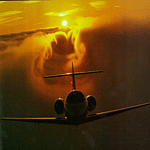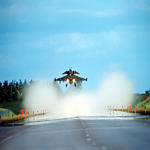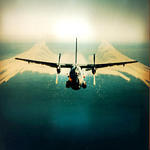 |
UNIVERSITY OF GENOA FACULTY OF ENGINEERING HYDRAULIC INSTITUTE |
 |
UNIVERSITY OF GENOA FACULTY OF ENGINEERING HYDRAULIC INSTITUTE |
I am planning to include in this page all the photo and images people sent me together with some description.
I would like to extend this section, so please email me any image you feel is pertinent to this project. Be sure to include a few lines of description of what can be seen in the image.
| I think this picture is of the same set of picture (1). The Author is again Paul Bowen. |
 |
(2) |
(5) |
 |
Another picture from the 1993 Aviation Week & Space Technology Photo Contest. This came second in the Military catergory, and it was taken by James E. Hobbs, from Lockheed Aircraft service Co., Ontario, California. The plane is ejecting flares during a test of an infrared missile warning and self-protection system installed on a C-130 Hercules. The trailing vortices formed in the wake are clearly visible. The size of these vortices is related to the lift produced by the wings, and the photograph suggests that the aircraft was climbing during this maneuver. |
| This picture shows a SAAB JAS39 Gripen landing on a rainy roadbase. Downwash is made evident by the foggy cloud above the runaway. |
 |
(6) |
(7) |
 |
Some more downwash ... this is a French Transall deploying flares. |